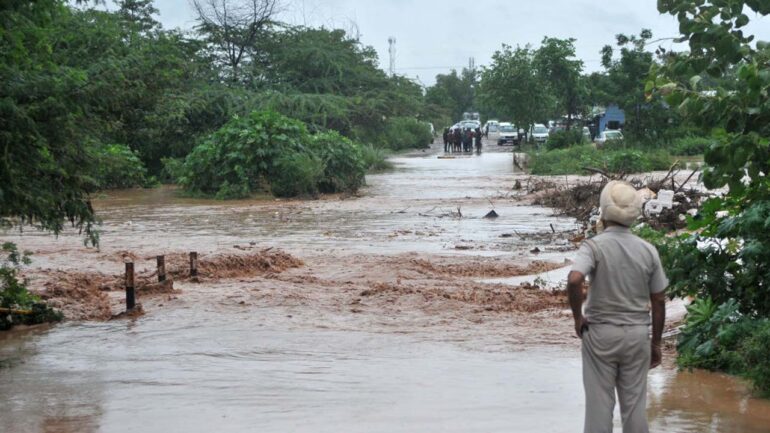The flood levels at Islam Headworks and Ganda Singh Wala along the Sutlej River have decreased to medium, providing some relief after being on high alert just a day ago.
This follows a decrease in the water flow from the Indian side, where dams on the river had been approaching maximum capacity.
Consequently, several districts in Punjab were swiftly directed to execute evacuation plans for vulnerable areas along the riverbank.
The Flood Forecasting Division (FFD) indicated that, as of 2 pm today, the flood levels had receded to medium at both locations.
This update comes as a positive turn from the previous forecast, which had predicted sustained high flood levels for the next 24 hours. Moreover, the Indus River’s flood levels at Taunsa, Chashma, and Guddu headworks were reported to be at low levels as of 12 pm.
The Punjab Provincial Disaster Management Authority (PDMA) reiterated the FFD’s assessment of improving flood conditions along the Sutlej River.
A spokesperson from the PDMA mentioned that more than a hundred villages had already returned to normalcy within the past three days as the inundation scenario improved.
The PDMA assured that the situation was under close monitoring, with ongoing relief measures in the affected districts.
During the recent days of crisis, 970 individuals were successfully rescued from various flood-stricken districts including Bahawalnagar, Kasur, Okara, Pakpattan, Lodhran, Vihari, and Bahawalpur.
Medical camps were set up in these districts, offering assistance to around 32,000 people.
Additionally, 175 relief camps were established to cater to the needs of affected residents, with rations distributed to 300 families grappling with flood-related difficulties.
Efforts were also directed towards safeguarding livestock, with 21,000 cattle being relocated to safer areas from regions at risk. Presently, the flood situation continues to impact 480 villages in Punjab.
Nabil Javed, Punjab’s Relief Commissioner, affirmed that life was gradually returning to normalcy and displaced individuals would soon be able to return to their homes.
He emphasized that the restoration of flood-affected areas was of paramount importance, as directed by the caretaker chief minister.
Notably, Rescue 1122 played a pivotal role in the ongoing rescue and evacuation operations.
According to Farooq Ahmad, the organization’s spokesperson, a total of 425 boats and 1,660 personnel were deployed for these efforts. In the past 24 hours, 6,725 individuals were successfully evacuated, 937 people were safely transported, and 1,021 animals were relocated to secure locations in districts including Okara, Vehari, Kasur, Pakpattan, and Bahawalnagar.
Simultaneously, the Pakistan Army remained actively engaged in relief and rescue initiatives across inundated areas.
The army carried out different activities including distribution of free rations, execution of rescue operations, and establishment of free medical camps for flood-affected individuals in various locations including Khairpur Tammay Wali, Hasilpur, and Bahawalnagar.
Collaborating with local authorities, the army facilitated the safe relocation of residents from flood-hit regions, including Mailsi, Chishtian, Minchanabad, Vehari, Pakpattan, Hasilpur, Arifwala, and head Sulaimanki.



